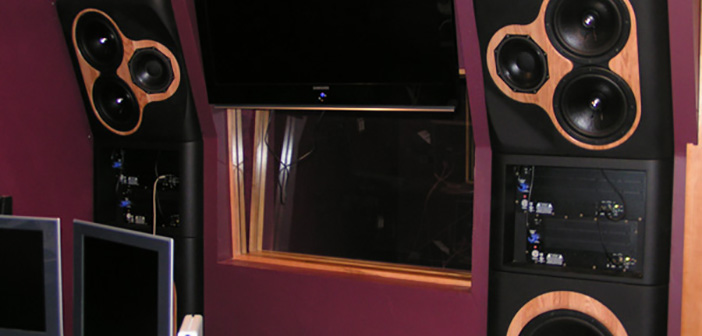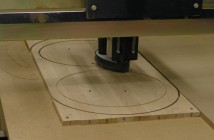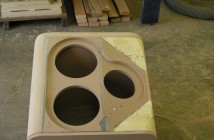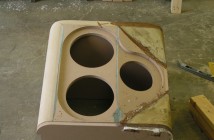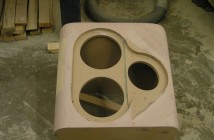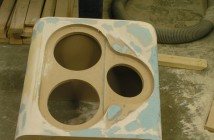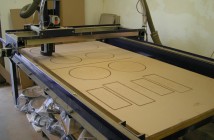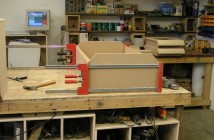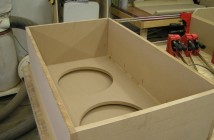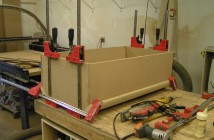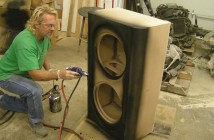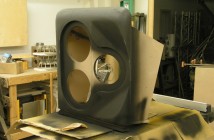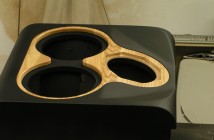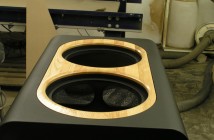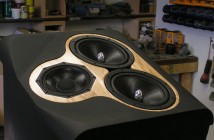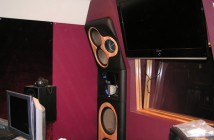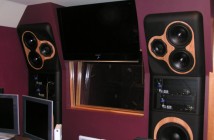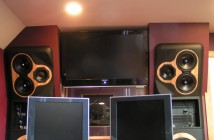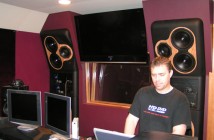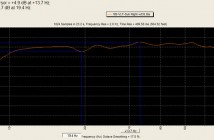Designed, built, and installed as a collaboration between Acoustic Elegance and Seaton Sound, these custom studio monitors offer unparalleled accuracy, extension, and incredible output capability.
 While Acoustic Elegance is known for making the world’s best woofers, many custom projects have also been completed over the years. Back in 2007, Acoustic Elegance was approached by Nick Barnett, owner of Clarity Music Group. He was looking for monitors for a new recording studio project. The goals were straight forward. Build a set of monitors that could provide the output of large soffit mounted monitors. Achieve extension to monitor in room as low as 10Hz at significant output levels when necessary. Create an aesthetically pleasing monitor that can do all this while fitting within the physical limitations of the room. What resulted was one of our favorite installations over the years.
While Acoustic Elegance is known for making the world’s best woofers, many custom projects have also been completed over the years. Back in 2007, Acoustic Elegance was approached by Nick Barnett, owner of Clarity Music Group. He was looking for monitors for a new recording studio project. The goals were straight forward. Build a set of monitors that could provide the output of large soffit mounted monitors. Achieve extension to monitor in room as low as 10Hz at significant output levels when necessary. Create an aesthetically pleasing monitor that can do all this while fitting within the physical limitations of the room. What resulted was one of our favorite installations over the years.
There were a few unique challenges with this system. First and foremost was placing the monitors in the small room. While the size of the room was beneficial in reaching the goals for low end extension, it presented some challenges everywhere else. The space on the front wall was quite limited. There was no way to fit a large monitor with dual 15″ woofers side by side with a large horn. It was decided that a vertical approach with separate subwoofer cabinets would be required. Due to the position of the door (a requirement for the next room) the control desk and one monitor would need to be placed directly against the left wall. The right monitor would be positioned on the inside of the door, 3ft from the wall. This created some vast differences for how each monitor would react in the room. The issue was first addressed through the treatment of the room. The side walls were studded, filled with mineral wool, and soft panels were made to cover the wall. This would offer good absorption down into the vocal range. Mark Seaton of Seaton Sound, Inc. was also brought in to dial in the system and match both channels as closely as possible at the mix position. Over 300 measurements were taken and analyzed to provide the closest possible match between the left and right monitors.
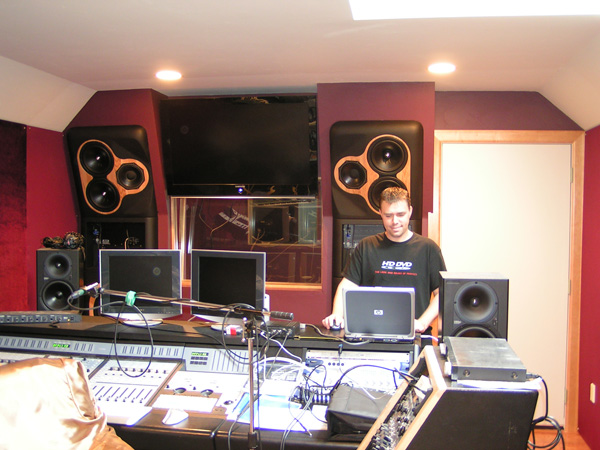 The main monitors were a 3-way design using a pair of TD10X for midbass and a B&C 8″ coaxial driver with 1.4″ compression driver for mid/high frequency. This main monitor alone was very capable, offering extension down to under 30hz in room. This monitor using the coax driver was also the proof of concept for what would later become the Seaton Sound Catalyst. The bass modules each used a pair of SBP15’s per channel. To keep the cabinet design simple, work within the space limitations, and achieve the most accurate reproduction, all sealed enclosures were used for this system. Power for the main monitors was supplied by a 3 channel SpeakerPower DSP amplifier. A single channel SpeakerPower DSP amplifier was used for the woofer section. A total of 4500W was on tap for the system providing tremendous amounts of headroom.
The main monitors were a 3-way design using a pair of TD10X for midbass and a B&C 8″ coaxial driver with 1.4″ compression driver for mid/high frequency. This main monitor alone was very capable, offering extension down to under 30hz in room. This monitor using the coax driver was also the proof of concept for what would later become the Seaton Sound Catalyst. The bass modules each used a pair of SBP15’s per channel. To keep the cabinet design simple, work within the space limitations, and achieve the most accurate reproduction, all sealed enclosures were used for this system. Power for the main monitors was supplied by a 3 channel SpeakerPower DSP amplifier. A single channel SpeakerPower DSP amplifier was used for the woofer section. A total of 4500W was on tap for the system providing tremendous amounts of headroom.
Aesthetically, Nick wanted to have something that was more than the average black box. Large 3″ radius curves were used to bring the monitors out from the wall and create a unique look. This also allowed for the required 13-15 degree angle to be placed on the baffle aiming the B&C coax directly to the “sweet spot” at the mix position. Great effort was put into hand forming much of the baffle with a combination of materials. To further tie in the look to the room, solid oak inserts were made for the baffles on both the main monitor and woofer cabinets. The SpeakerPower DSP amplifiers were nested in their own cavities between the main monitors and woofer cabinets.
The result easily surpassed expectations. Completely effortless sound from 10Hz to 20KHz with plenty of headroom for even the most demanding reproduction. As the studio was used mostly for hiphop, these monitors could easily reproduce cleanly to levels that would make even the loudest car stereos jealous, all while remaining extremely accurate and defined. If you have a custom project in mind, please feel free to contact us to see what we can do to help you.
“Fortunately John was able to get in and take care of the side walls acoustically. There is 6″ of absorption behind the fabric you see on the walls. Being slightly off-center is both good and bad. It tends to help reduce deep nulls in the upper bass response, but you then have to work a little harder to keep the left-right balance. The 13-15 deg angle inward on the 8″ coaxial combined with its HF directivity left the upper frequency range very well matched between the channels from the start. The differences and room-related issues were mostly as we expected, below ~800Hz and above about 40Hz.”
Included graphs in the gallery show the response of the main monitors and the EQ’d bass response of the system. “Of course we are all bass nuts here, so we want to get an idea of what happened when we dropped these in the room… …Note the scale and that the cursors show the response here fits +/-2.5dB at the listening position! ”
Custom Install Specifications:
- Budget
~$25,000-$35,000 depending on options - Loudspeaker Type:
3-way active + 2x active Subwofer - In-Room Frequency Response:
10Hz-20KHz - Bass
Total 4x SBP15 - Mid-bass:
(2x) TD10X-8 per channel - Mid/High frequency:
B&C 8″ Coaxial with 1.4″ compression driver - Amplification:
Speaker Power 250/500/500W Mains
Speaker Power 1000W Bass - Crossover/Processing:
Onboard DSP in Speaker Power Amps - Collaboration With:
Seaton Sound, Inc.

